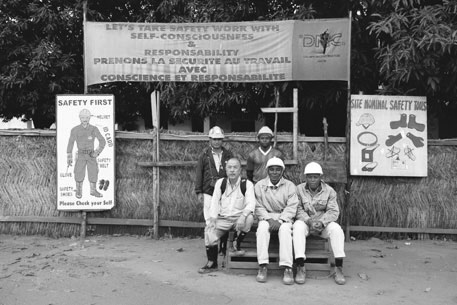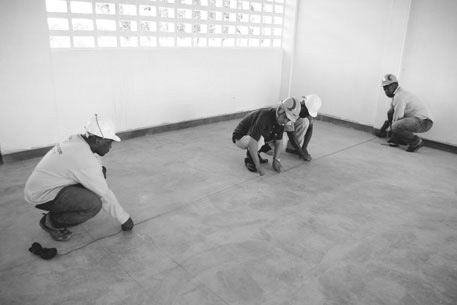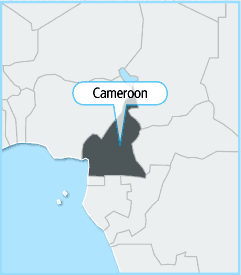Japan's Official Development Assistance White Paper 2010
Column 2 Building Schools on African Soil
—Assistance for the Construction of
Primary Schools in Cameroon—
”Japan leaves behind more than aid.” Mr. Ndongo from the Ministry of Basic Education of Cameroon praises Japan’s assistance for the construction of primary schools. ”Compared with the aid of other countries, Japanese aid leaves intangible assets to Cameroon, such as improved construction skills and management ability.”
Located in Central West Africa, Cameroon is known for, among others, its production of cacao, a key ingredient of chocolate. Cameroon is also described as a ”microcosm of Africa”— it has diverse nature ranging from rainforest to grassland and has over 250 tribes. However, the deterioration of the budget situation in recent years has caused aging and shortages of educational facilities. In response to a request from the Government of Cameroon, which has been faced with such problems, Japan has consistently provided assistance for the construction of primary schools since 1997 (*1).
The primary schools constructed with Japanese ODA have received positive feedback in Cameroon as model schools. The principal of a primary school in the capital city of Yaounde says, ”Thanks to the École du Japon (school constructed by Japan), children are able to study in a conducive educational environment. We are very proud of this school.”
Mr. Yoshiaki Nishino has been involved with the construction of more than 100 schools ever since Japan began its cooperation for the construction of primary schools in Cameroon. He is deeply trusted by not only the Japanese but also the Cameroonian staff members. Currently, Mr. Nishino, as a staff member of a Japanese private company Dai Nippon Construction, is engaged in all aspects of the construction process including the procurement and management of building materials, quality control and progress management for the work. At construction sites, Mr. Nishino keeps the sharp eye of a professional on each and every step of construction. Beginning with Zambia in 1982, he has spent 22 years working on projects in Africa. Through his activities in the last ten years in Cameroon, he has succeeded in localizing Japanese techniques and customs, such as Japanese methods of drawing sumi ink lines (*2), quality management, organization of materials, thorough safety management, and a morning routine of chorei or morning assembly, followed by a briefing meeting and Japanese radio exercises at the construction site.
Mr. Nishino emphasized his effort on ”human development.” ”During the last ten years, I have repeatedly told my staff about the importance of compassion, consideration, and appreciation in addition to technical skills. It is the reality of Cameroon that people cannot find jobs even if they graduate from university. You need food to live, but you also need food for the heart.” Today, Mr. Nishino is still busy constructing primary schools together with his staff full of ”food for the heart.” In parallel with the efforts of Mr. Nishino and his staff, Cameroon made primary education free in 2000 and is on track to achieve the Millennium Development Goal (MDG) of realizing universal primary education by 2015.
Over the past decade Cameroonian staff members have shared his joys and sorrows. When Mr. Nishino was hospitalized for malaria, all of them attended to him until morning. ”I feel relaxed when I see the red soil of Cameroon from airplane.” When the company employing him decided to withdraw from Cameroon in 2009, Mr. Nishino took an early retirement and found his current job in order to stay and give back to Cameroon. He resolved to work on primary school construction projects.
”I am very grateful that I have talked and shaken hands with many people on the African soil,” he says. Today, as always, Mr. Nishino is working hard with his local staff at a construction site.
*1 Project for construction of primary schools (Phases I to IV) (grant aid)
*2 Lines are drawn in construction work to establish benchmarks, such as the centerline of a pillar of a building or the location of the finished surface of the floor or wall. Although chalk is generally used in Cameroon, the Japanese technique of using equipment to draw sumi ink lines is used to prevent chalk marks from being erased by the rain.

Mr. Nishino (front row, left) with local staff and engineers (Photo: Mr. Nishino)

Mr. Nishino teaching how to draw a sumi ink line (Photo: Mr. Nishino)

